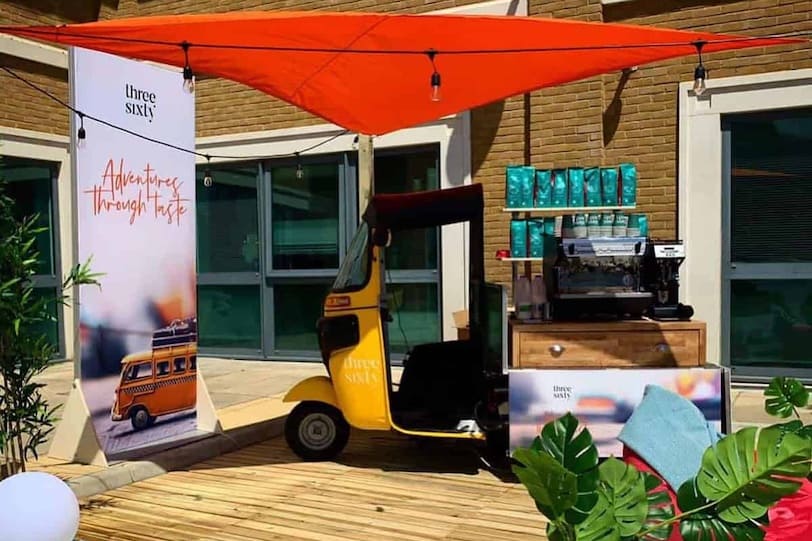When planning events – whether it’s conferences, trade shows, or social gathering venues – one of the key goals is to foster social interaction among attendees. Designing event and networking spaces that facilitate networking and mingling is crucial for creating a vibrant and engaging atmosphere. In this article, we will explore effective strategies and considerations for designing event spaces that encourage social interaction.
Creating Event Spaces That Encourage Social Interaction
There’s a lot that goes into creating event spaces that encourage social interaction, from getting the layout right to incorporating technology in a thoughtful way. So, let’s learn how to design your events for networking and mingling:
Layout and Flow
The layout of the event space plays a pivotal role in promoting social interaction. By integrating crowd engagement designs to creating defined socialising areas, there are plenty of things you can do to encourage networking through layout. Here are some key considerations:
- Open Floor Plans: When space planning for events, opt for open floor plans that allow attendees to navigate the space easily and encourage fluid movement. Avoid excessive barriers, such as tall partitions or closed-off sections, which can hinder interactions and create a sense of isolation.
- Flow Zones: Divide the event space into different flow zones, such as registration areas, gathering places, exhibit halls, lounges, and breakout rooms. Strategically position these zones to ensure a logical flow of attendees, promoting spontaneous interactions and preventing overcrowding in specific areas.
- Focal Points: Create focal points within the event space to draw people together. This can be achieved through captivating displays, interactive installations, or central gathering areas where attendees can naturally converge and engage in conversations
Seating Arrangements
Thoughtful seating arrangements can greatly influence social dynamics within an event space. By grouping the right people together during your event, you can encourage mingling and networking in an organic way. Consider the following:
- Variety of Seating Options: Provide a range of seating options, including communal tables, cosy lounges, and high-top cocktail tables. This diversity allows attendees to choose their preferred setting based on their comfort level and networking preferences.
Flexible Furniture: Utilise modular and flexible furniture arrangements that can be easily reconfigured to accommodate different group sizes and encourage spontaneous conversations. This adaptability allows for fluid socialisation and fosters a dynamic environment.
Collaborative Spaces: Design dedicated areas for collaborative work and discussion. These spaces and meeting venues can include small meeting pods, brainstorming corners, or networking lounges equipped with comfortable seating and interactive displays, encouraging attendees to connect and share ideas.
Technology Integration
Integrating technology effectively into event spaces can enhance networking opportunities, provide conversation starters for attendees and create a seamless experience. It’s also a great opportunity to showcase the latest and greatest innovations in event design, which further enhances the success and buzz around your event. Consider the following strategies:
Interactive Displays: Incorporate interactive event design through displays and touchscreens across the event space. These can showcase event information, provide networking tools, or facilitate interactive activities that encourage attendees to engage with one another.
Mobile Apps: Develop a mobile app specifically designed for the event, offering features such as attendee profiles, chat functions, and personalized recommendations. This empowers attendees to connect with like-minded individuals and facilitates networking before, during, and after the event.
Social Media Walls: Create social media walls that display live updates, tweets, and posts related to the event. This not only promotes engagement but also allows attendees to find common interests and initiate conversations based on shared experiences.
Strategic Signage and Wayfinding
Clear and intuitive signage is essential for guiding attendees and facilitating interactions. By integrating strategic signage, you can encourage those in attendance to congregate in certain areas to promote networking. Consider the following signage strategies:
Directional Signage: Place prominent directional signage throughout the event space to guide attendees to different areas and activities. This helps prevent confusion and encourages exploration, leading to more serendipitous interactions.
Interactive Maps: Provide interactive digital maps that attendees can access through mobile devices or touchscreens. These maps can highlight key areas, schedule updates, and offer personalised recommendations, making it easier for attendees to navigate and discover networking opportunities.
Networking Hotspots: Use signage or icons to indicate specific areas within the event space where networking opportunities are encouraged. These hotspots can include designated meeting areas, industry-specific zones, or interactive installations designed to spark conversations.
Incorporate These Tips for a More Connected Event Space
Designing event spaces that encourage social interaction and networking is crucial for creating a vibrant and engaging atmosphere. By considering layout and flow, seating arrangements, technology integration, and strategic signage, event planners can create environments that foster connections and meaningful interactions among attendees. By implementing these strategies, event organisers can elevate the attendee experience and create memorable events that leave a lasting impact.


